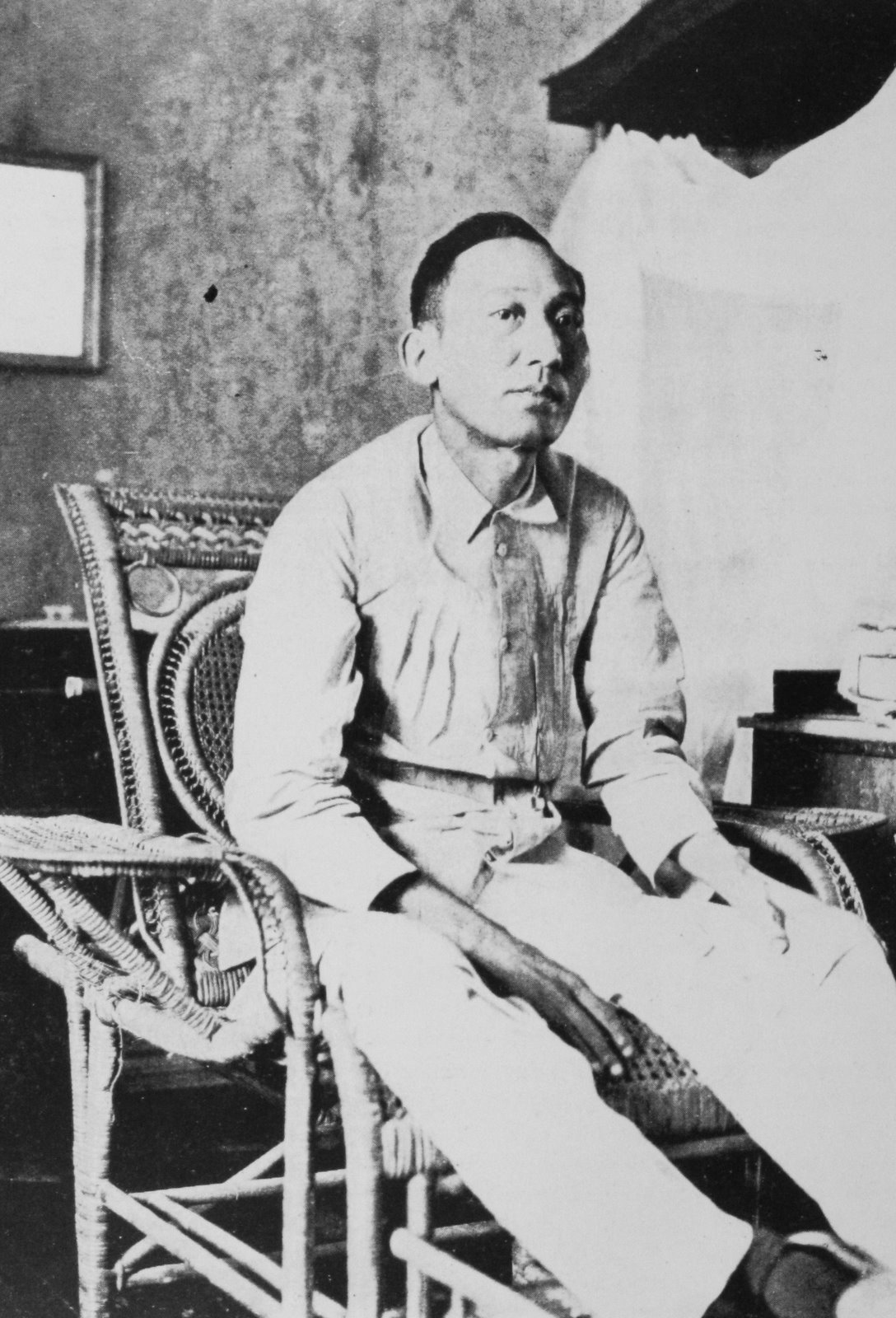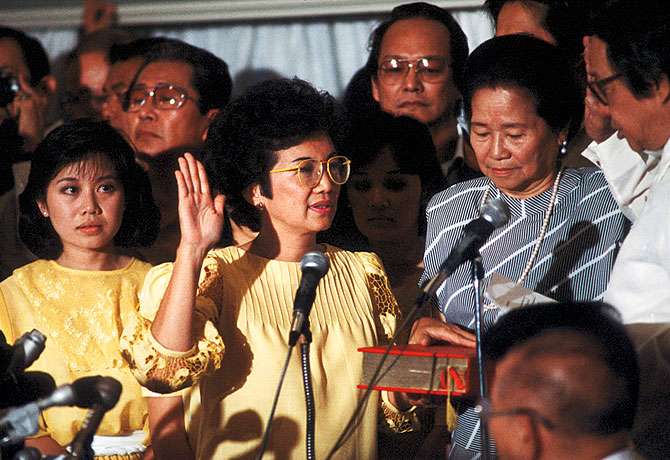|
Presidency Of Corazon Aquino
Corazon Aquino began her presidency on February 25, 1986, following the People Power Revolution as the 11th president of the Philippines, succeeding Ferdinand Marcos. Aquino's relatively peaceful ascension to the Philippine presidency signaled the end of authoritarian rule of Ferdinand Marcos in the Philippines, and drew her and the Filipino people international acclaim and admiration. During the first months of Aquino's presidency, the country experienced radical changes and sweeping democratic reforms. Aquino created the Presidential Commission on Good Government (PCGG), which was tasked to go after the Marcos ill-gotten wealth; however, after her presidency, the PCGG itself was also implicated by corruption scandals when it was alleged that officials wanted a cut of the Marcos assets and officials were "milking" sequestered assets. Aquino, being a revolutionary president by virtue of people power, repealed and abolished repressive laws under her predecessor, restored civil ... [...More Info...] [...Related Items...] OR: [Wikipedia] [Google] [Baidu] |
Malacañang Palace
Malacañang Palace (, ), officially known as Malacañán Palace, is the official residence and principal workplace of the president of the Philippines. It is located in the Manila district of San Miguel, Manila, San Miguel, along Jose Laurel Street, though it is commonly associated with nearby Mendiola Street. The term ''Malacañang'' is often used as a metonym for the president, Cabinet of the Philippines, their advisers, and the Office of the President of the Philippines. The sprawling Malacañang Palace complex includes numerous mansions and office buildings designed and built largely in the bahay na bato and Neo-classical architecture, neoclassical styles. Among the presidents of the present History of the Philippines (1986–present), Fifth Republic, only Gloria Macapagal Arroyo actually lived in the main palace as both her office and her residence, with all others residing in nearby properties that form part of the larger palace complex. [...More Info...] [...Related Items...] OR: [Wikipedia] [Google] [Baidu] |
Batasang Pambansa (legislature)
The Batasang Pambansa ('National Assembly', ), often referred to simply as the Batasan, was the legislature of the Philippines, established as an interim assembly in 1978 and later as an official body in 1984. It was the fourth unicameral legislature in Philippine history. Members of the Batasang Pambansa were referred to as Mambabatas Pambansa ('Member of Parliament', ), shortened to MP. The Batasan was instituted under the 1973 Constitution promulgated by then-President Ferdinand Marcos, replacing the earlier Congress of the Philippines established by the 1935 Commonwealth Constitution. It was abolished immediately after the People Power Revolution in 1986, and Congress was restored with the passage of the 1987 Constitution. History The original provisions of the 1973 Constitution, which was ratified on January 17, 1973, provided for the establishment of a unicameral National Assembly. Upon its ratification, an interim National Assembly composed of the president and t ... [...More Info...] [...Related Items...] OR: [Wikipedia] [Google] [Baidu] |
Department Of Budget And Management
The Department of Budget and Management (DBM; ) is an Executive departments of the Philippines, executive body under the Office of the President of the Philippines. It is responsible for the sound and efficient use of government resources for national development and also as an instrument for the meeting of national socio-economic and political development goals. The department has four undersecretaries and four assistant secretaries. History At the beginning of the 20th century, the Second Philippine Commission, acting as a legislative body, enacted appropriations measures for the annual expenditures of the government. This was in accordance with the Philippine Bill of 1902, which decreed that disbursements from the national treasury were to be authorized only in pursuance of appropriations made by law. With the passage of the Jones Law in 1916, the Philippine Legislature was set up with two chambers: the Philippine Senate and the House of Representatives of the Philippines, ... [...More Info...] [...Related Items...] OR: [Wikipedia] [Google] [Baidu] |
Department Of Agriculture (Philippines)
The Department of Agriculture (DA; ) is the executive department of the Philippine government responsible for the promotion of agricultural and fisheries development and growth. It has its headquarters at Elliptical Road corner Visayas Avenue, Diliman, Quezon City. The department is currently led by the secretary of agriculture, nominated by the president of the Philippines and confirmed by the Commission on Appointments. The secretary is a member of the Cabinet. The current secretary is Francisco Tiu Laurel Jr., who assumed office on November 3, 2023. History The Department of Agriculture had its spiritual beginnings when President Emilio Aguinaldo of the Revolutionary Government of the Philippines established the Department of Agriculture and Manufacturing on June 23, 1898. Jose Alejandrino was appointed the first secretary. American colonial government In 1901, under the American colonial government, priority was given to the development of other agricultural pro ... [...More Info...] [...Related Items...] OR: [Wikipedia] [Google] [Baidu] |
Department Of Agrarian Reform
The Department of Agrarian Reform (DAR; ) is an executive department of the Philippine government responsible for the redistribution of agrarian land in the Philippines. The secretary of agrarian reform is the head of DAR. List of the Secretaries of the Department of Agrarian Reform Organizational structure The Department is currently headed by a Secretary with the following Undersecretaries and Assistant Secretaries: *Undersecretary for Field Operations *Undersecretary for External Affairs and Communications Operations *Undersecretary for Support Services *Undersecretary for Finance, Management and Administration *Undersecretary for Policy, Planning and Research *Undersecretary for Legal Affairs *Undersecretary for Foreign Assisted and Special Projects *Undersecretary for Special Concerns *Undersecretary for Mindanao Affairs and Rural Development *Assistant Secretary for Field Operations *Assistant Secretary for Legal Affairs in Agrarian Law Implementation and Agrarian Le ... [...More Info...] [...Related Items...] OR: [Wikipedia] [Google] [Baidu] |
Joker Arroyo
Ceferino "Joker" Paz Arroyo Jr. (; January 5, 1927 – October 5, 2015) was a Filipino statesman and key figure in the 1986 EDSA Revolution, EDSA People Power Revolution that ousted dictator Ferdinand Marcos. He was a Congressman for Makati from 1992 to 2001 and Senator of the Philippines, Senator from 2001 to 2013. Arroyo received various awards and commendations for his significant contributions to the law profession and public service. Among these are the Philippine Bar Association's Most Distinguished Award for Justice as a "man beholden to no one except to his country" and Senate Resolution No. 100 enacted in the 8th Congress of the Philippines, 8th Congress citing his invaluable service to the Filipino people. He was also known for being the thriftiest legislator, earning the title of "Scrooge of Congress", as he only had few staff members without bodyguards and did not use his pork barrel funds. In 2018, Arroyo was identified by the Human Rights Victims' Claims Board as a ... [...More Info...] [...Related Items...] OR: [Wikipedia] [Google] [Baidu] |
Executive Secretary (Philippines)
The Office of the Executive Secretary of the Philippines (formerly the Executive Office) is the head and highest-ranking official of the Office of the President of the Philippines and a member of the Cabinet of the Philippines. The office-holder has been nicknamed as the "''Little President''" due to the nature and mandate of the position "to directly assist the President in the management of affairs of the government as well as to direct the operations of the Executive Office." It is headed by the executive secretary in which appointed by the President of the Philippines, president upon confirmation by the Commission on Appointments. The office was established on October 12, 1936, with Jorge B. Vargas as the inaugural holder. The postion of executive secretary is currently held by former Chief Justice Lucas Bersamin, who retained his position after President Bongbong Marcos declined his courtesy resignation following a cabinet reshuffle in the aftermath of the 2025 Philippine ... [...More Info...] [...Related Items...] OR: [Wikipedia] [Google] [Baidu] |
Prime Minister Of The Philippines
The prime minister of the Philippines was the official designation of the head of the government (whereas the president of the Philippines was the head of state) of the Philippines from 1978 until the People Power Revolution in 1986. During martial law and the fourth republic, the prime minister served as the head of the Armed Forces of the Philippines.Article IX, Section 12. ''1973 Constitution of the Philippines'' A limited version of this office, officially known as the President of the Council of Government, existed temporarily in 1899 during the First Philippine Republic. Salvador Laurel served as the last prime minister of the Philippines and later served as the vice president of the Philippines from 1986 to 1992. History First creation (1899) The 1899 Constitution of the Philippines created the office of the Council of Government () which was composed of the President of the Council () and seven secretaries.Title IX, Article 73. ''1899 Constitution of the Philipp ... [...More Info...] [...Related Items...] OR: [Wikipedia] [Google] [Baidu] |
Salvador H
Salvador, meaning "salvation" (or "saviour") in Catalan, Spanish, and Portuguese may refer to: * Salvador (name) Arts, entertainment, and media Music *Salvador (band), a Christian band that plays both English and Spanish music ** ''Salvador'' (Salvador album), 2000 * ''Salvador'' (Ricardo Villalobos album), 2006 * ''Salvador'' (Sega Bodega album) 2020 *"Salvador", a song by Jamie T from the 2007 album '' Panic Prevention'' Other uses in arts, entertainment, and media * ''Salvador'' (book), a 1983 book by Joan Didion * Salvador (character), a fictional character from the ''Borderlands'' video game series * ''Salvador'' (film), a 1986 motion picture about the Salvadoran civil war of the 1980s *''Salvador (Puig Antich)'', a 2006 Spanish film about Salvador Puig Antich * "Salvador" (short story), a 1984 science fiction short story by Lucius Shepard Places Brazil * Salvador, Bahia, the capital of the State of Bahia, Brazil, the largest city in the world with this name Canada * Sal ... [...More Info...] [...Related Items...] OR: [Wikipedia] [Google] [Baidu] |
Vice-President Of The Philippines
The vice president of the Philippines (, also referred to as ) is the second-highest official in the executive branch of the Philippine government and is the first in the presidential line of succession. The vice president is directly elected by the citizens of the Philippines and is one of only two nationally elected executive officials, the other being the president. The current office of the vice president was re-established under the 1987 Constitution, bearing similarities with the office as created in the 1935 Constitution that was abolished by the Marcos regime. The vice president may be elected to two consecutive six-year terms. The 15th and incumbent vice president Sara Duterte was inaugurated on June 19, 2022, but her term officially began 11 days later on June 30, as per the constitution. Title The official title of the office in Filipino is ''Pangalawang Pangulo,'' although ''Bise Presidente,'' derived from Spanish, is the usual title used in some of the major ... [...More Info...] [...Related Items...] OR: [Wikipedia] [Google] [Baidu] |
Corazon Cojuangco Aquino
María Corazón "Cory" Sumulong Cojuangco-Aquino (; January 25, 1933 – August 1, 2009) was a Filipino politician who served as the 11th president of the Philippines and the first woman president in the country, from 1986 to 1992. She was the most prominent figure of the 1986 People Power Revolution, which ended the two-decade rule of President Ferdinand Marcos and led to the establishment of the current democratic Fifth Philippine Republic. Aquino was married to Senator Benigno Aquino Jr., who was one of the most prominent critics of President Marcos. After the assassination of her husband on August 21, 1983, she emerged as leader of the opposition against the president. In late 1985, Marcos called for a snap election, and Aquino ran for president with former Senator Salvador Laurel as her running mate for vice president. After the election held on February 7, 1986, the Batasang Pambansa proclaimed Marcos and his running mate Arturo Tolentino as the winners, which promp ... [...More Info...] [...Related Items...] OR: [Wikipedia] [Google] [Baidu] |





